You know how Apple went from that quirky computer company your art teacher loved to basically ruling the tech world? Yeah, that didn’t happen by accident. These days, they’re pulling in about $81 billion just from services – stuff like the App Store and iCloud. That’s a quarter of everything they make, and it’s completely changed how we think about tech companies. This deep dive looks at exactly how Apple transformed from a struggling computer maker into a cultural phenomenon that redefined entire industries.
Table of Contents
-
Strategic Marketing Evolution: From Computer Maker to Cultural Icon
-
Innovation Management and Product Development: The Science Behind Breakthrough Products
-
Financial Performance and Business Model Innovation: Building the World’s Most Valuable Company
-
Competitive Strategy and Market Positioning: Creating Unbreakable Customer Loyalty
TL;DR
-
Apple flipped the script on tech marketing by selling feelings and identity instead of boring spec sheets
-
The “Think Different” campaign made buying Apple products about joining a cool rebellion, not just getting better hardware
-
Their product launch events became must-watch entertainment that generates billions in free publicity
-
Everything Apple makes works together so well that buying one product naturally leads to buying more
-
They obsess over fixing things that annoy people rather than just showing off the latest technology
-
Apple waits for the perfect moment to enter markets, then redefines entire categories instead of just competing
-
Services like the App Store and iCloud create steady monthly income that doesn’t depend on people buying new phones
-
Once you’re in the Apple ecosystem, switching to anything else becomes expensive and complicated
Strategic Marketing Evolution: From Computer Maker to Cultural Icon
What’s wild about Apple is they basically flipped the entire playbook on how to sell tech. Most companies back in the day were obsessed with cramming spec sheets down your throat – “Look! Our processor is 0.2 gigahertz faster!” But Apple? They said “screw that” and decided to sell you a feeling instead.
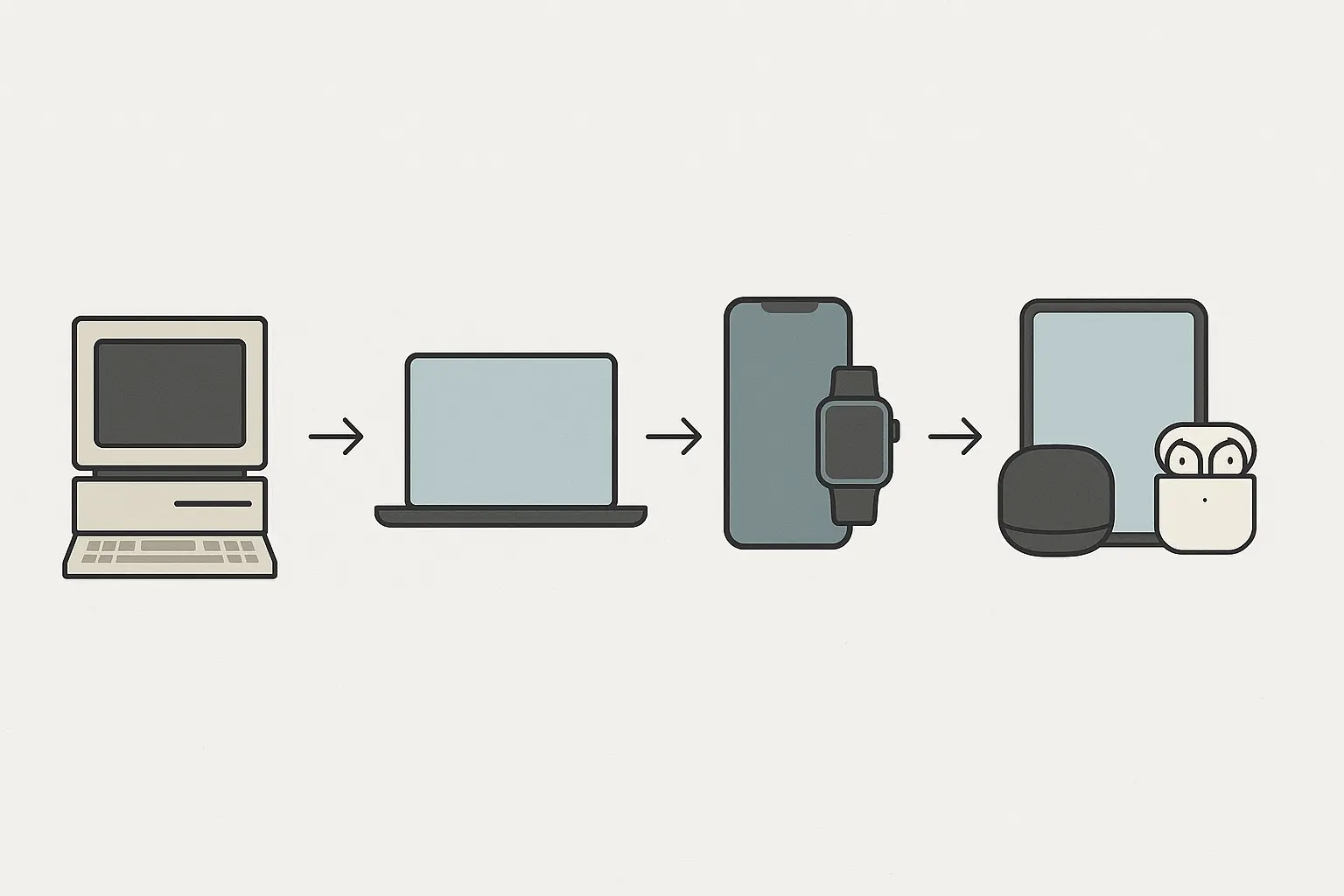
Brand Identity and Positioning Strategy: Building Beyond Products
Here’s the thing – Apple figured out something most companies still don’t get. People don’t really buy products. They buy into stories about who they want to be. And Apple became really, really good at telling those stories.
The “Think Different” Philosophy Implementation: Emotional Rebellion Over Technical Specs
I’ve got to hand it to Apple – they completely changed the game with that “Think Different” campaign. Instead of boring you with RAM specifications, they basically said “Hey, want to be part of the cool kids club? The rebels? The creative types who change the world?”
It was genius, honestly. Suddenly, buying a Mac wasn’t just about getting a computer. It was about joining this exclusive group of artists, innovators, and free thinkers. You weren’t just a customer – you were making a statement about who you were.
And here’s what really gets me – this wasn’t just marketing fluff. They actually lived it. Everything from their product design to their stores to their ads reinforced this message. It’s like they created this whole identity that people could buy into, literally.
The crazy part? It worked so well that people still feel this way about Apple products today. I know folks who’ll defend their iPhone choice like it’s their favorite sports team. That’s not about technical specs – that’s about emotional connection.
Apple’s commitment to emotional branding continues today with storytelling as an essential part of every Apple ad as well as marketing campaign according to recent marketing analysis. The company consciously ensures that its advertising doesn’t use too much jargon, instead letting products speak for themselves through simple, powerful narratives.
This approach to storytelling and emotional connection demonstrates principles similar to those discussed in our guide on creating high-impact content that resonates with audiences on a deeper level than surface-level features and benefits.
Premium Positioning Tactics: Justifying Higher Prices Through Perceived Value
Let’s be real – Apple products cost more. Sometimes a lot more. But somehow, they convinced millions of people that it’s totally worth it. How’d they pull that off?
It starts with the little things. Ever unbox an iPhone? It’s like unwrapping a present. The box itself feels expensive, everything’s perfectly arranged, and there’s this whole ritual to it. Compare that to most Android phones that come in basic cardboard boxes with twist ties everywhere.
But the real magic trick? They made you stop caring about price comparisons. While Samsung and everyone else were racing to the bottom on price, Apple was over here talking about “user experience” and “design philosophy.” They changed the conversation entirely.
Think about it – when was the last time you heard someone justify buying an iPhone by saying “Well, it was the cheapest option”? Never, right? People buy iPhones because they want iPhones. That’s premium positioning at its finest.
|
Premium Positioning Element |
Apple’s Approach |
Why It Works |
|---|---|---|
|
Product Packaging |
Ceremonial unboxing experience |
Makes you feel special before you even use the product |
|
Store Environment |
Gallery-like presentation spaces |
Treats products like premium art pieces |
|
Marketing Messages |
Focus on lifestyle benefits |
Avoids getting into price wars |
|
User Experience |
Everything just works smoothly |
Justifies the higher price through better usability |
|
Brand Associations |
Innovation, creativity, status |
Makes you feel cooler for owning one |
Integrated Marketing Communications Framework: Orchestrating Unified Brand Experiences
Apple’s really good at making sure everything feels connected. Whether you see their ad on TV, visit their website, or walk into a store, it all feels like the same company with the same personality. That’s harder than it sounds.
Their comprehensive approach to measuring marketing effectiveness mirrors the importance of tracking performance metrics, much like the strategies outlined in our marketing ROI calculator guide for optimizing campaign returns.
Product Launch Event Mastery: Turning Presentations into Cultural Phenomena
Okay, let’s talk about those Apple events. You know, the ones where they unveil new products and somehow make it feel like the Super Bowl of tech?
I’ve watched probably dozens of these things over the years, and they’re genuinely entertaining. Steve Jobs started it, but even now, people actually get excited to watch a company presentation. When’s the last time you got pumped to watch Microsoft announce a new version of Windows?
The genius is in how they build suspense. Weeks before the event, tech blogs are going crazy with rumors and speculation. “Will they announce a new iPhone? What color options? Is there a secret ‘one more thing’?” It’s like a TV show with cliffhangers.
And then the presentation itself – it’s not just some guy in a suit reading bullet points off slides. They tell stories. They show you how this new feature will actually make your life better. They make you want stuff you didn’t even know existed an hour earlier.
The best part? All this excitement generates massive media coverage without Apple spending a dime on ads. Every tech journalist, YouTube reviewer, and blogger covers every detail. It’s basically free advertising that reaches millions of people. The ripple effects last for months. Each keynote creates talking points, generates reviews, and keeps Apple in the cultural conversation long after the event ends.

Minimalist Advertising Approach: Elegant Simplicity That Resonates
Have you ever noticed how clean Apple ads look? While other companies are cramming their commercials with feature lists, pricing information, and “LIMITED TIME OFFERS!!!” in flashing text, Apple shows you a white background and maybe three words.
It’s almost annoyingly simple. But that’s exactly why it works.
Think about those iPhone camera ads. Instead of telling you about megapixels and sensor sizes (which most people don’t understand anyway), they just show you gorgeous photos taken with the phone. The message is clear: “This is what you can create.”
This approach treats people like they’re smart enough to get it without having everything explained. And honestly, in a world where we’re bombarded with information all day, that simplicity is refreshing. The emotional punch comes through subtle storytelling. Whether it’s showing how FaceTime connects families or how the iPad enables creativity, they focus on human benefits rather than technical achievements.
Consider Apple’s iPhone camera advertising campaigns. Instead of listing megapixel counts or sensor specifications, they show stunning photographs taken with the device accompanied by simple taglines. This approach lets the product quality speak for itself while making the technology accessible to everyday users who care more about results than technical details.
Retail Experience Innovation: Transforming Shopping into Brand Immersion
Walking into an Apple Store feels different than going to Best Buy or any other electronics store. It’s more like visiting a museum or art gallery than a retail shop.
Everything’s out in the open for you to touch and play with. No locked display cases or “DO NOT TOUCH” signs. They want you to pick up that iPad, swipe around, and see how smooth everything feels.
And those employees? They’re not trying to upsell you on extended warranties or accessories you don’t need. They actually seem to know what they’re talking about and genuinely want to help you find the right product.
The Genius Bar was revolutionary when it launched. Instead of calling some 1-800 number and getting transferred five times, you could just walk in and talk to a real person who could actually fix your problem. It sounds basic now, but back then, that level of customer service was unheard of in tech retail.
What impressed me most is how the stores serve multiple purposes at once. They’re retail spaces, customer service centers, educational venues, and brand showcases all rolled into one. Every visit reinforces Apple’s premium positioning and commitment to customer experience.
Customer Ecosystem Development: Creating Interconnected Value Networks
Here’s where Apple got really sneaky (in the best way possible). They figured out how to make buying one Apple product lead to buying more Apple products. It’s like digital quicksand – but the kind you actually enjoy being stuck in.
Product Integration Strategy: Making the Whole Greater Than the Sum
Once you’re in the Apple ecosystem, leaving becomes really, really hard. And not because they’re holding you hostage – because everything just works so well together.
I started with just an iPhone years ago. Then I got a Mac because I liked how my photos synced automatically. Then an iPad because it worked seamlessly with both. Then an Apple Watch because, well, you see where this is going.
Each new device made the others more useful. My watch unlocks my Mac. My phone shares its internet with my iPad. Everything backs up to the same cloud. It’s convenient to the point where switching to a different brand feels like moving backwards.
And that’s the genius of it. Apple isn’t just selling you a phone or a laptop – they’re selling you an entire digital lifestyle that gets better the more you buy into it.
The financial impact is huge. Instead of selling individual products, Apple sells complete ecosystems. Customers who start with one device often end up purchasing multiple products over time, dramatically increasing how much they spend with Apple overall.
I’ve experienced this firsthand. What started as a single iPhone purchase eventually led to an iPad, MacBook, Apple Watch, and various services subscriptions. Each addition felt logical and beneficial, but collectively they represent a significant investment that would be costly to abandon.
This strategy has proven remarkably effective, with Apple achieving a 92% retention rate, surpassing Google and Samsung, which solidifies its market dominance through ecosystem lock-in effects.
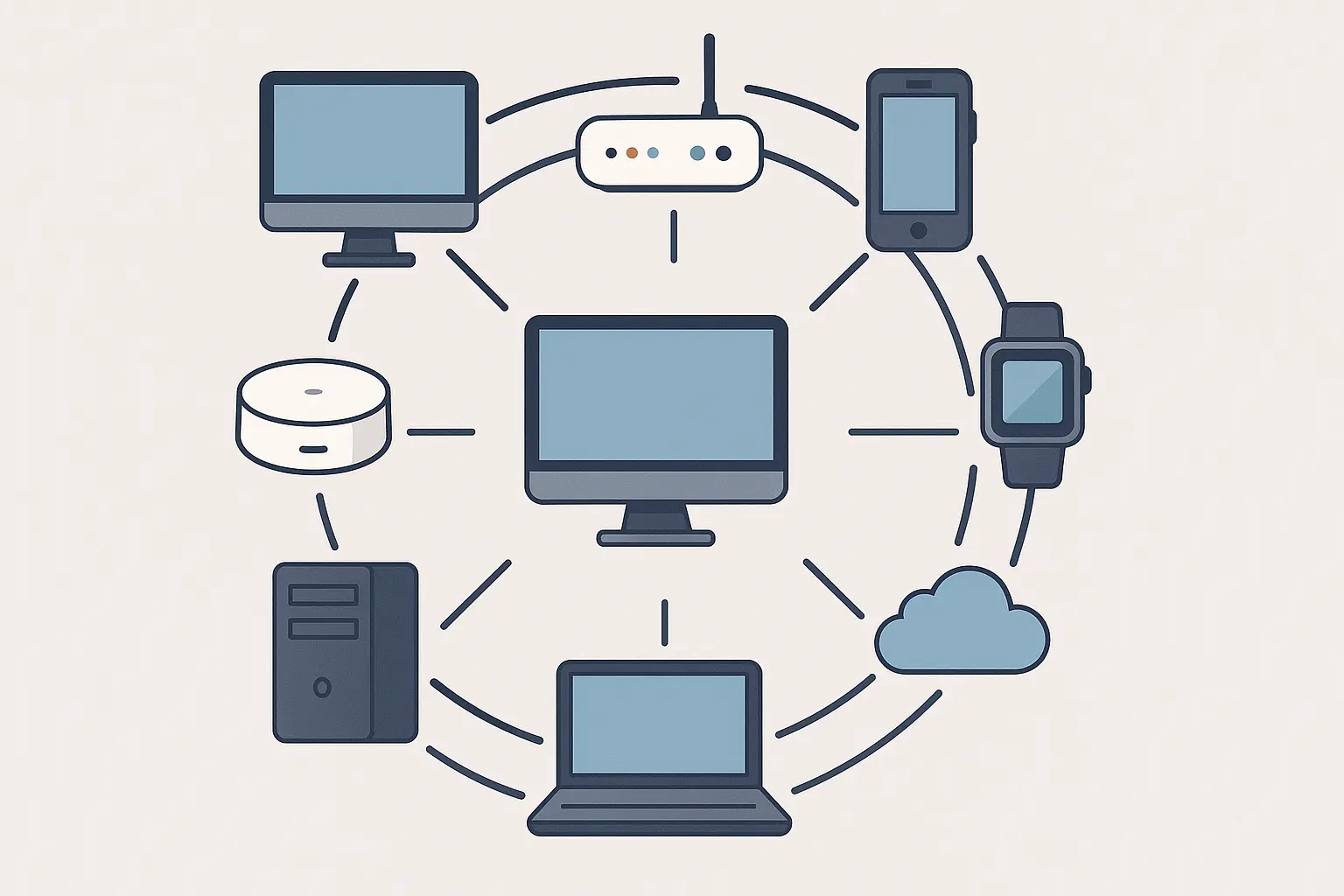
Innovation Management and Product Development: The Science Behind Breakthrough Products
Apple doesn’t just throw stuff at the wall and see what sticks. They’ve got this whole system for creating products that people didn’t even know they wanted until they existed.
Design-Driven Innovation Process: Integrating Form, Function, and Technology
What sets Apple apart is how they think about design. It’s not just about making things look pretty – it’s about making complex technology feel simple and intuitive.
User-Centered Design Methodology: Obsessing Over Customer Pain Points
Apple starts with a simple question: “What’s annoying people right now, and how can we fix it?” Instead of beginning with “What cool technology can we show off?”
Take the original iPhone. Everyone else was trying to cram full keyboards onto tiny screens or making phones with dozens of buttons. Apple looked at that mess and said, “What if we just had one button and made the screen do everything?”
They spend crazy amounts of time just watching people use existing products. Where do they get confused? What makes them frustrated? What do they try to do that the product doesn’t support? These observations become the foundation for new products.
It’s not about having the most advanced technology – it’s about using technology to solve real problems in ways that feel natural and obvious. The best Apple products make you think “Why didn’t someone think of this before?”
Their iterative testing process is equally intense. Products go through countless prototype cycles, with each version tested extensively with real users. Features that seem clever in theory but confuse actual users get eliminated, regardless of how much effort went into developing them.
The development of the original iPad demonstrates this methodology perfectly. Apple identified that laptops were too complex for casual computing tasks such as reading, browsing, and media consumption. Rather than creating a smaller laptop, they designed an entirely new category of device that addressed these specific use cases with touch-first interaction and simplified software experiences.
This user-focused approach to product development aligns with the analytical methodologies discussed in our advanced analytics for strategic growth guide, where understanding customer behavior drives innovation decisions.
Iterative Prototyping and Testing: Perfecting Through Repetition
The stories about Apple’s development process are legendary. They’ll build dozens of prototypes, testing different materials, button placements, and interface designs until they get something that feels just right.
What’s impressive is their willingness to start over when something isn’t working. Most companies get attached to their first idea and try to fix problems with band-aid solutions. Apple will throw away months of work if they discover a better approach.
Their internal criticism process is brutal. Every product gets picked apart by multiple teams, with everyone encouraged to find flaws and suggest improvements. It sounds harsh, but it means only the really solid ideas make it to market.
The financial investment in
The financial investment in this process is enormous, but it pays off big time in market reception. When Apple launches something, it’s usually polished to a degree that makes competitors’ products look rushed by comparison, even when those competitors have had additional development time.
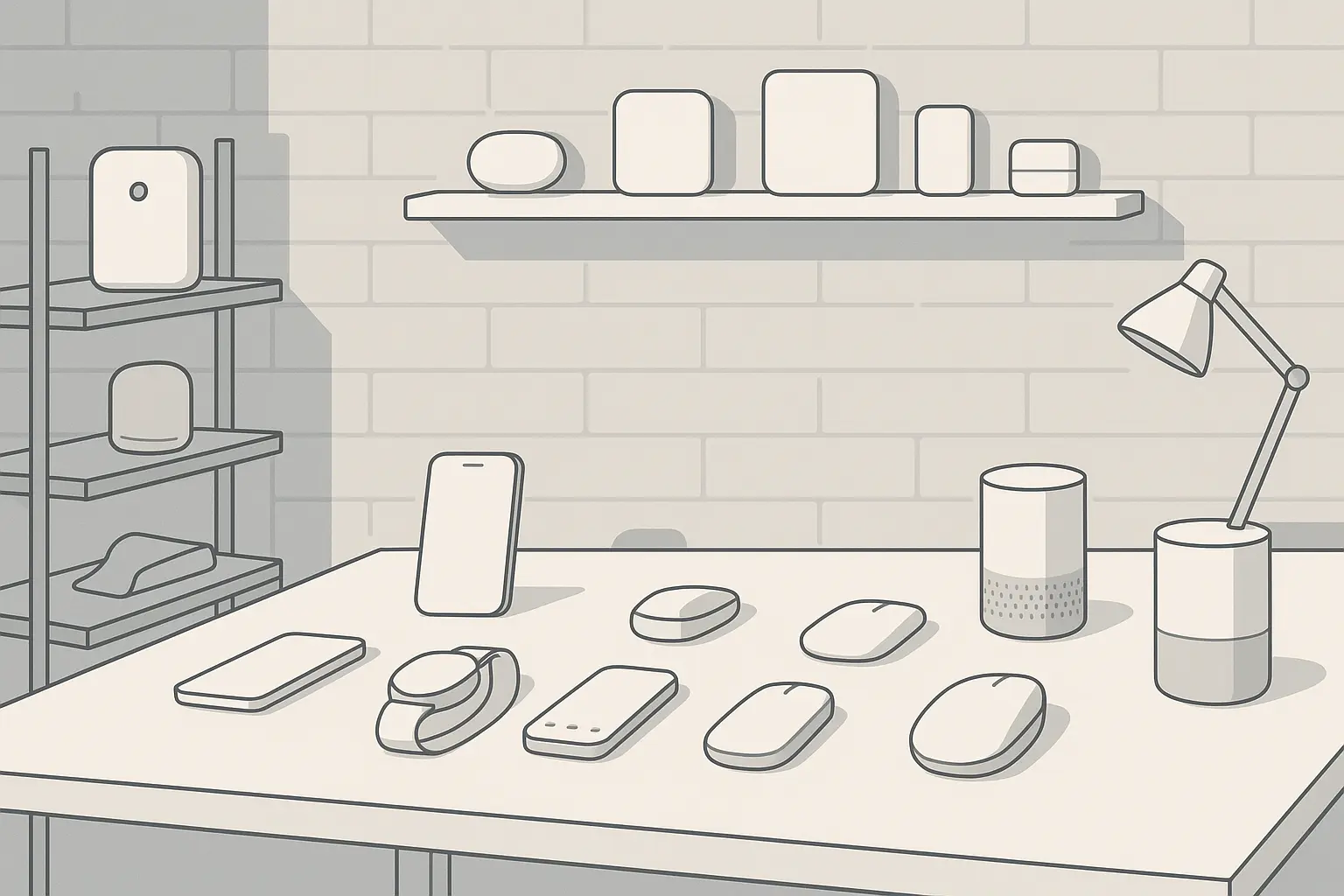
Market Timing and Category Creation: Entering Markets at the Perfect Moment
Apple has this weird superpower: they’re almost never first to market, but they’re usually the ones who get it right.
Technology Adoption Curve Mastery: Finding the Sweet Spot
Think about tablets. Microsoft and others had been trying to make tablet computers work for years. But they were clunky, expensive, and only appealed to tech nerds who didn’t mind carrying around a laptop-sized device with a stylus.
Apple waited. They watched the early attempts fail, studied what people actually wanted to do with tablets, and waited for the technology to catch up to the vision. When they finally launched the iPad, it wasn’t just a better tablet – it created an entirely new product category.
This pattern repeats constantly. Smartphones existed before the iPhone. MP3 players existed before the iPod. But Apple waited until they could create versions that regular people would actually want to use.
Their market research goes way beyond surveys and focus groups. They study behavioral trends, technology adoption patterns, and cultural shifts to identify moments when people are ready for something new. The key insight is that successful innovation isn’t just about having great technology – it’s about introducing that technology when people are ready to embrace it. Apple excels at reading these market conditions and timing their entries accordingly.
Apple’s continued focus on market timing is evident in their approach to emerging technologies. Recent developments show Apple XR Business case studies highlight the benefits of the company’s extended reality ecosystem with the Vision Pro, demonstrating how they enter new categories when enterprise applications and consumer readiness align.
Financial Performance and Business Model Innovation: Building the World’s Most Valuable Company
Apple’s not just successful because they make cool products. They’ve built a money-making machine that keeps growing even when people aren’t buying new iPhones every year.
Revenue Diversification Strategy: Beyond Hardware Sales
Here’s something most people don’t realize: Apple makes a ton of money from stuff that isn’t hardware. And this “other” revenue is often more profitable than selling actual products.
Services Revenue Growth: Leveraging the Installed Base
The App Store alone is basically a money printer. Apple takes a cut of every app sale, every in-app purchase, every subscription. And since the cost of hosting another download is essentially zero, it’s almost pure profit.
But it gets better. iCloud storage subscriptions create steady monthly revenue. Once you start backing up your photos and documents to iCloud, you’re probably going to keep paying that $2.99 a month forever. It’s not enough to think about canceling, but it adds up to billions in predictable revenue.
Apple Music, Apple TV+, and their other services work the same way. Each subscription makes the Apple ecosystem stickier while generating ongoing income that doesn’t depend on people buying new hardware.
This is brilliant business strategy. Hardware sales can be unpredictable – some years people upgrade, some years they don’t. But subscription revenue is steady and predictable, making Apple’s overall business more stable and valuable to investors.
The effectiveness of this strategy is demonstrated by Apple Music surpassing 88 million subscribers in 2023, while iCloud Storage is now used by over 850 million active Apple IDs, contributing to 60% of Apple’s services revenue.
Understanding the financial impact of these revenue streams requires sophisticated tracking methods, similar to the approaches outlined in our comprehensive revenue calculator for measuring business performance across multiple income sources.
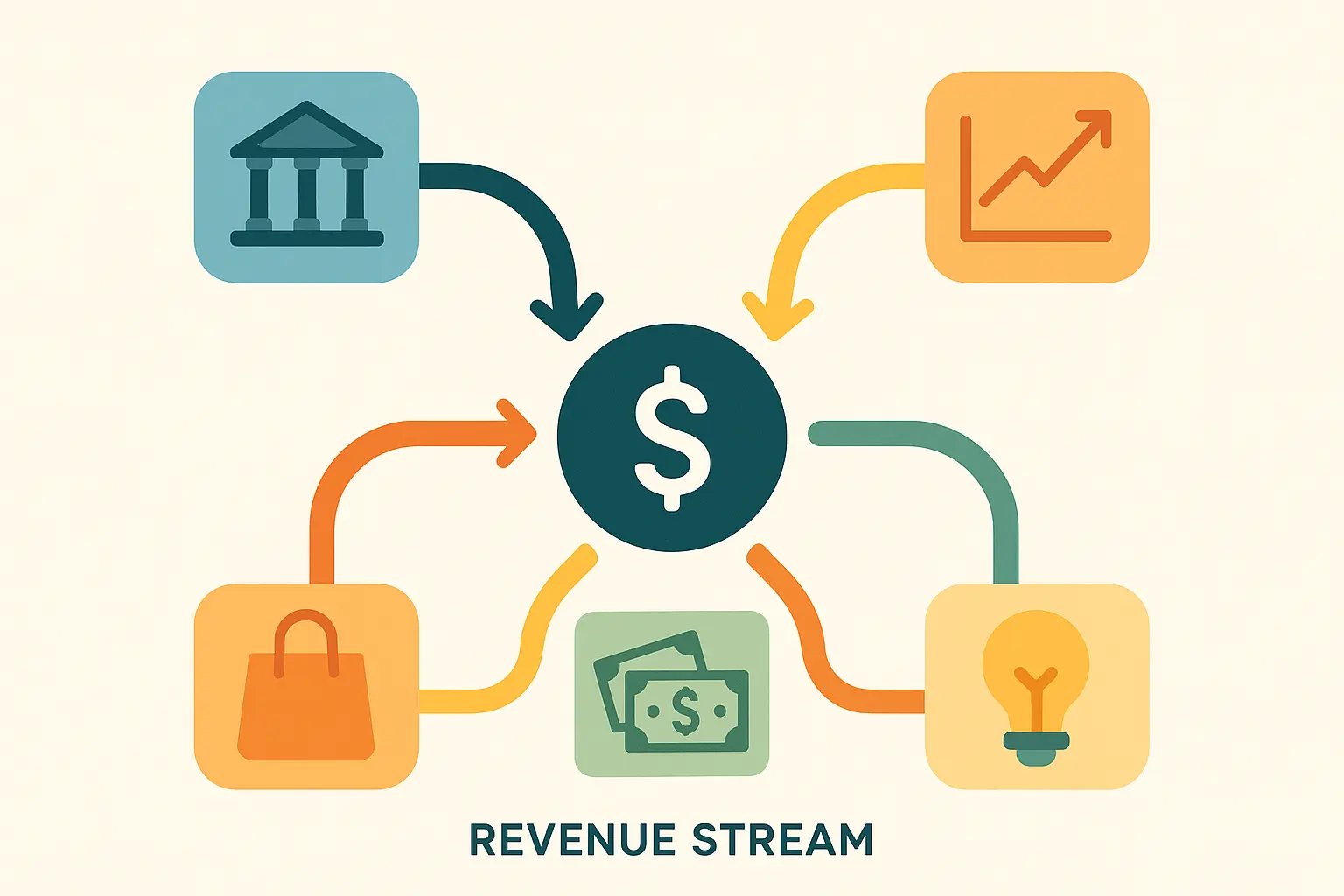
Supply Chain and Operations Excellence: Scaling Premium Quality
Apple’s supply chain management is probably the most boring part of their business, but it’s also one of the most important. They’ve figured out how to make premium products at massive scale without compromising quality.
Vendor Relationship Management: Strategic Partnerships for Competitive Advantage
Apple’s size gives them incredible negotiating power. When they commit to buying millions of components, suppliers will offer exclusive access, better pricing, and collaborative development that smaller companies can’t get.
But it’s more than just throwing their weight around. Apple works closely with suppliers to develop new materials, manufacturing processes, and quality standards. These partnerships often result in innovations that benefit both companies while creating barriers for competitors.
The exclusivity deals are particularly smart. When Apple locks up the world’s supply of advanced display panels or processing chips, competitors have to wait in line or settle for inferior alternatives. This gives Apple significant advantages in product differentiation and launch timing.
Inventory and Demand Forecasting: Balancing Efficiency with Availability
Apple has gotten really good at predicting how many products they’ll sell. This might sound basic, but it’s incredibly difficult to do accurately, especially when you’re dealing with millions of units across dozens of countries.
Their just-in-time manufacturing approach means components arrive at assembly facilities precisely when needed, reducing storage costs and minimizing the risk of obsolete inventory. This efficiency translates directly to improved profit margins.
Their forecasting systems incorporate everything – historical sales data, economic indicators, market research, even social media sentiment. This comprehensive approach helps them anticipate demand and adjust production accordingly.
What’s impressive is how they balance efficiency with customer satisfaction. Despite minimal inventory buffers, Apple rarely experiences significant product shortages (except during initial launch periods, which actually creates additional demand through scarcity marketing).
The financial benefits are substantial. Lower inventory carrying costs improve cash flow and return on assets, while accurate demand forecasting reduces the need for costly markdowns or write-offs of obsolete products.
|
Operational Excellence Metric |
Apple’s Performance |
Industry Impact |
|---|---|---|
|
Inventory Turnover |
40+ times annually |
3x higher than competitors |
|
Supply Chain Efficiency |
99.5% on-time delivery |
Reduces stockout risk |
|
Supplier Relationships |
200+ strategic partners |
Exclusive component access |
|
Quality Control |
<0.1% defect rate |
Premium brand reputation |
|
Demand Forecasting Accuracy |
95%+ prediction rate |
Minimizes waste and markdowns |

Competitive Strategy and Market Positioning: Creating Unbreakable Customer Loyalty
Apple doesn’t just compete on features or price. They’ve built something much more powerful: a customer base that’s genuinely reluctant to switch to competitors.
Ecosystem Lock-in Strategy: Making Switching Costly and Complicated
This is where Apple gets really smart (and maybe a little evil, depending on your perspective). They’ve made leaving the Apple ecosystem so inconvenient that most people just… don’t.
Platform Strategy Development: Building Network Effects
The App Store creates what economists call network effects. Developers make apps for iOS because that’s where the customers are. Customers choose iOS because that’s where the best apps show up first. It’s a self-reinforcing cycle that gets stronger over time.
For customers, switching means losing access to purchased apps, years of accumulated data, learned workflows, and seamless integration between devices. That’s not just inconvenient – it’s expensive and time-consuming.
The developer ecosystem represents a massive competitive moat. Millions of developers have invested time and resources learning iOS development, creating apps optimized for Apple’s platforms, and building businesses around the App Store. Switching to develop for competing platforms requires significant additional investment.
The platform strategy also means Apple benefits from innovation happening across their entire developer community. Every great app created for iOS makes the platform more attractive, essentially giving Apple access to thousands of developers working to improve their ecosystem’s value proposition.
Think about a photographer who’s invested in Final Cut Pro, Logic Pro, and dozens of iOS apps for photo editing and client management. Switching to Windows or Android would mean repurchasing software, relearning workflows, losing seamless file sync between devices, and potentially losing years of organized photo libraries and project files. That’s thousands of dollars and hundreds of hours of switching costs.
The measurement of customer lifetime value and retention rates requires sophisticated analytics, similar to the methodologies discussed in our ROAS calculator guide for tracking long-term customer value across multiple touchpoints.
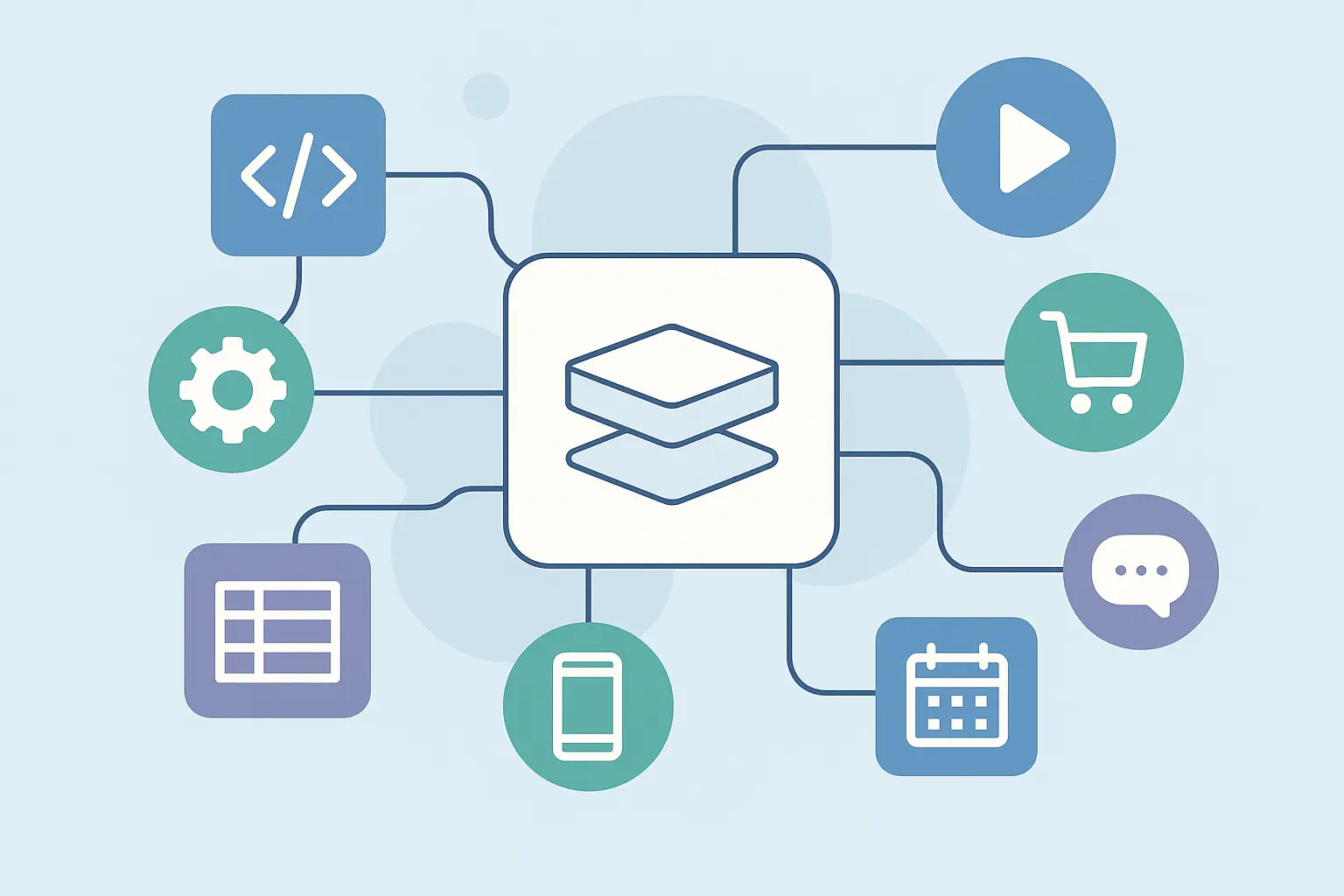
Apple’s ecosystem strategy continues to evolve with sustainability initiatives. Recent reports show that in 2024, 24% of the materials shipped in Apple products, by weight, came from recycled sources as part of their circular manufacturing approach, demonstrating how environmental responsibility strengthens ecosystem appeal.
Ready to transform your business with data-driven marketing strategies that deliver measurable results? The Marketing Agency specializes in helping companies build powerful brand positioning and integrated marketing campaigns that drive real ROI. Our performance-focused approach combines the strategic thinking demonstrated in Apple’s success with cutting-edge digital marketing execution. Whether you need comprehensive PPC management, email marketing optimization, or complete inbound marketing solutions, we’ll help you create the kind of customer loyalty and business growth that lasts. Don’t gamble on marketing – build your success on proven strategies rooted in data and science.
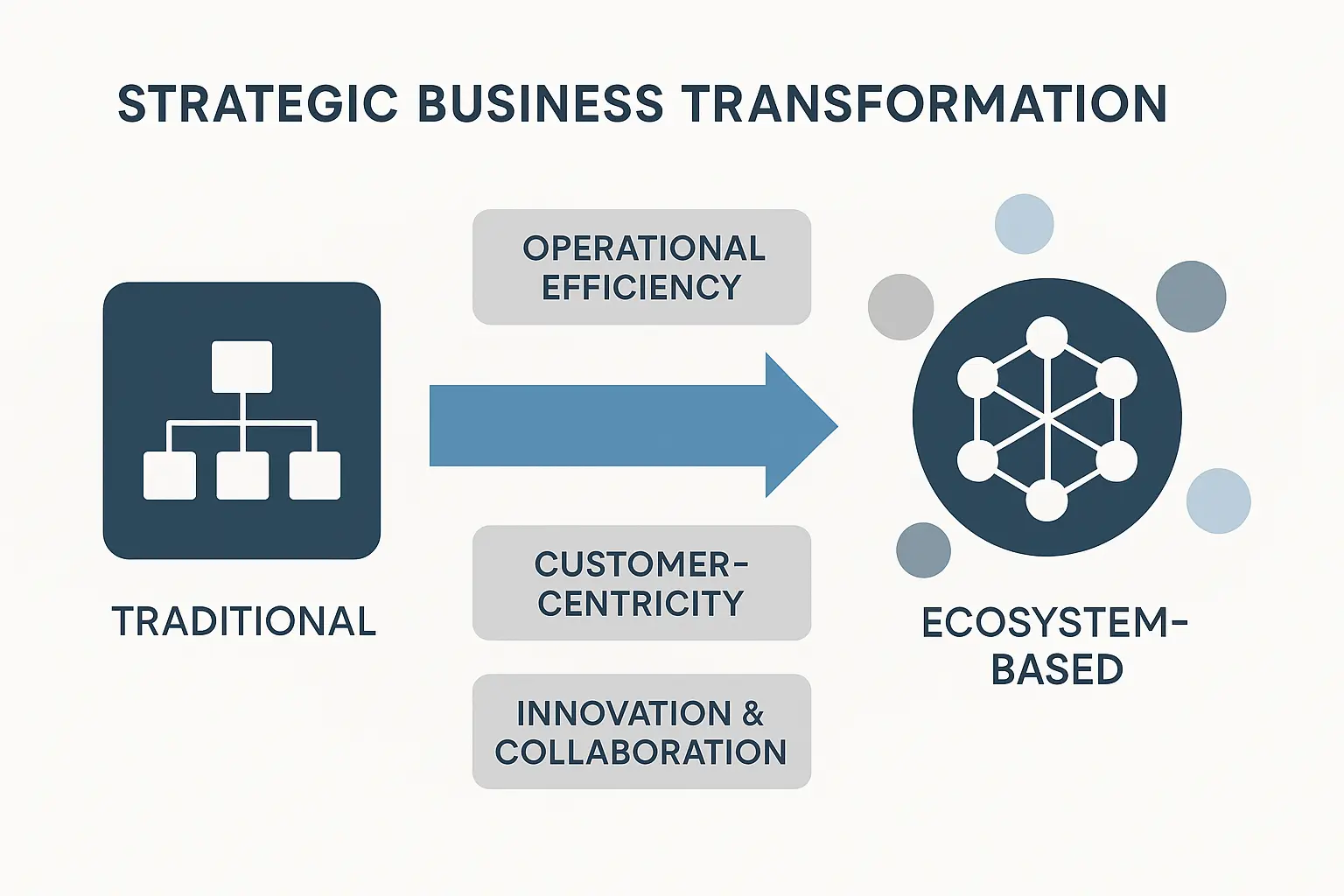
Final Thoughts
Apple’s transformation from struggling computer company to the world’s most valuable corporation isn’t just a business success story – it’s a masterclass in understanding what people actually want and delivering it better than anyone else.
The real lesson here isn’t about having the best technology or the biggest marketing budget. It’s about building products and experiences that people genuinely love and find hard to leave. Apple proved that when you focus obsessively on customer experience, financial success follows naturally.
What impresses me most is how they consistently chose long-term thinking over short-term gains. They invested heavily in brand building, user experience, and operational excellence even when it meant lower profits in the short run. That patience and discipline ultimately created far more value than any quick-fix approach ever could.
The lessons extend way beyond tech companies. Any business can apply Apple’s focus on user experience, integrated marketing communications, and ecosystem thinking to create stronger customer relationships and more defensible market positions. What strikes me most about Apple’s approach is how they consistently chose long-term strategic thinking over short-term tactical wins. They invested heavily in brand building, customer experience, and operational excellence even when it meant lower short-term profits. This patience and strategic discipline ultimately created far greater value than any quick-fix approach could have achieved.
The numbers speak for themselves, but the real achievement is building a business that customers actively recommend to friends and family. That’s the kind of sustainable competitive advantage every company should aspire to create.



